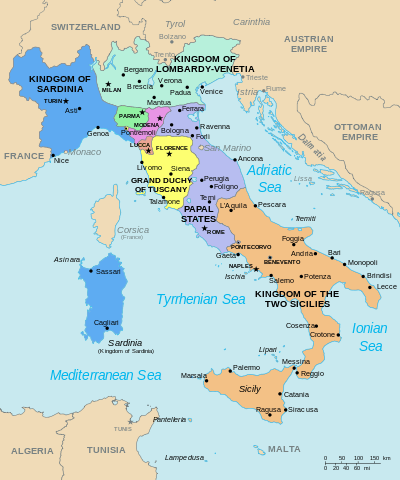Order of Pope Pius IX
| Order of Pope Pius IX Italian: Ordine di Papa Pio IX | |
|---|---|
|
Knight's cross of the Order of Pius IX | |
| Awarded by The Pope | |
| Type | Chivalric order |
| Established | 1847 |
| Motto |
VIRTUTI ET MERITO (Virtue and Merit)[1] |
| Status | Currently constituted |
| Sovereign | Pope Francis |
| Grades |
Knight with the Collar Knight/Dame Grand Cross Knight/Dame Grand Officer Knight/Dame Commander Knight/Dame |
| Precedence | |
| Next (higher) | Order of the Golden Spur |
| Next (lower) | Order of St. Gregory the Great |
|
Ribbon bar of the order | |
The Order of Pope Pius IX (Italian: Ordine di Pio IX), also referred as the Pian Order (Italian: Ordine Piano), is a papal order of knighthood founded on 17 June 1847 by Pope Pius IX.[1] Since November 1993, it has been granted to women.
Founded by Pope Pius IV in 1560, the awarding of the order fell into disuse and was re-instituted by Pope Pius IX as a continuation in 1847.
The highest rank awarded by the Pope is the gold Collar of the Order, awarded to heads of state on the occasion of official visits to the Holy See. The Grand Cross is the highest Papal award given to lay men and women, often given to Ambassadors accredited to the Holy See after two years in post as well as exceptional Catholics in the wider world for particular services, mainly in the international field and for outstanding deeds for Church and society.
The next rank is that of Knight (and now Dame) Commander, to whom the Star (the same as worn by the Grand Crosses) may be given as a higher distinction. The lowest rank is that of Knight or Dame. It is awarded to Catholics and non-Catholics and, on occasion, to non-Christians.
Order of Classes
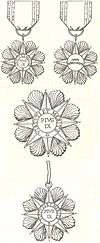
The Order comprises five classes:
- Knight with the Collar: who wear a gold chain around their shoulders which is decorated with the papal tiara and two doves, and on the breast a large badge. It is the highest active papal decoration, and is reserved for heads of state.
- Knight / Dame Grand Cross (GCPO): who wear a wide dark blue silk ribbon (sash) bordered with red which extends saltire-wise from the left shoulder to the right side where the star of the order is suspended by a rosette, and on the breast a large diamond-studded badge. It is commonly awarded to the ambassadors accredited to the Holy See.
- Knight / Dame Commander with Star (KC*PO / DC*PO): who in addition to the star wear a badge of smaller design than that of Knights of the Great Ribbon on the breast
- Knight / Dame Commander (KCPO / DCPO): who wear the decoration at the neck
- Knight / Dame (KPO / DPO): who wear the star on the left breast
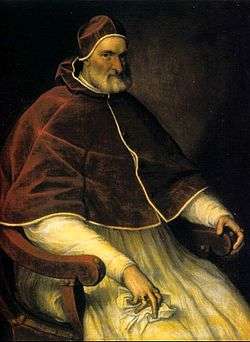
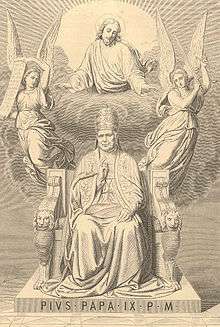
 | ||||
Insignia and uniform
The decoration is a regular octagram made of blue enamel, the spaces between the rays filled with gold flames. On the white medallion in the center the name of the founder surrounded by the words Virtuti et Merito ("Virtue and Merit") is engraved. The reverse side is the same save for the substitution of Anno 1847 for Pius IX. The rarely worn official uniform consists of an elaborately embroidered dark blue evening coat with golden epaulettes, white trousers, and a white-plumed bicorne.
Knights with the Collar wear a gold decorated chain around the neck, and a star on the left side of the breast; Knights Grand Cross wear a sash and a star on the left side of the breast; Commanders wear a cross around the neck; and Knights wear a smaller cross on the left breast of the uniform:
Notable members
Royal houses and nobility
- Haile Selassie I, Emperor of Ethiopia
- King Juan Carlos I of Spain, first and only honorary canon of the Basilica of Saint Mary Major
- Albert II, King of the Belgians
- Carl XVI Gustaf, King of Sweden, with Collar.
- Marie Joseph Charles, 6th Duke d'Ursel
- Miles Stapleton Fitzalan-Howard, 17th Duke of Norfolk, Earl Marshal, Premier Duke of England
- Fra Andrew Bertie, Prince and Grand Master of the Sovereign Military Order of Malta
- Jean-Pierre Mazery, Grand Chancellor of the Sovereign Military Order of Malta
- Henri, Grand Duke of Luxembourg, with Collar.
- Count Herman van Rompuy, former Prime minister - with Collar.
- Count Charles Woeste, Minister
- Count Charles de Broqueville, former Prime minister.
Politicians
- Konstantinos Stephanopoulos, former President of Greece
- Diosdado Macapagal, former President of the Philippines
- Jacques Chirac, former President of France
- Juscelino Kubitschek, former President of Brazil
- Carlos Menem, former President of Argentina
- Demetris Christofias, former President of Cyprus
- Władysław Grabski, former Prime Minister of Poland
- George Papandreou, former Prime Minister of Greece
- Virgil C. Dechant, former vice-president for the Vatican Bank & Supreme Knight of the Knights of Columbus
- Marcelo Rebelo de Sousa, current President of Portugal
Diplomats to the Holy See
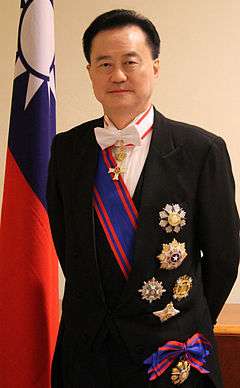
- Mercedes Arrastia Tuason, Philippine Ambassador to the Holy See and Magistral Dame of the Knights of the Order of Malta
- Khétévane Bagration de Moukhrani, Georgian Ambassador to the Holy See
- Daniel Ramada Piendibene, former Uruguayan Ambassador to the Holy See and Grand Cross pro Merito Melitensi.
- William A. Wilson, former United States Ambassador to the Holy See
- Frank Shakespeare, former United States Ambassador to the Holy See
- Thomas Patrick Melady, former United States Ambassador to the Holy See
- Raymond Flynn, former Mayor of Boston, Massachusetts, Ambassador to the Holy See
- Lindy Boggs, former Member of Congress and Ambassador to the Holy See
- Peter K. Murphy
- Joseph V. Reed
See also
References
- 1 2

|access-date=requires|url=(help)
External links
| Wikimedia Commons has media related to Order of Pope Pius IX. |
- Association of Papal Orders in Great Britain
- Association of Papal Orders in Great Britain of Pius IX, Saint Gregory and Saint Sylvester: The Pontifical Order of Pius IX
- The Knights of Christ's Mercy: Order of Pius IX
- National Association of Papal Honorees: Roll of US Members of the Order of Pius IX

